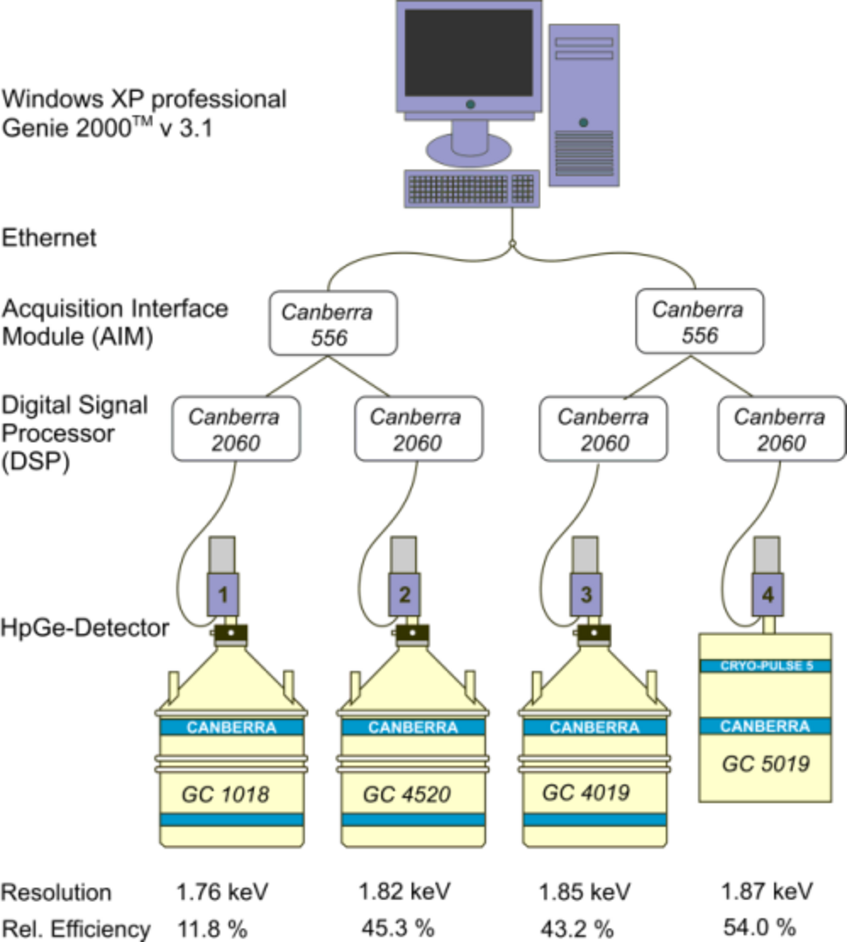Gammaspectrometry

Geochemical studies of impact craters are a main research topic at the Department of Lithospheric Research using its INAA-gamma spectroscopy laboratory facility.
Instrumental Neutron Activation Analysis
Our INAA laboratory utilizes four coaxial Canberra HpGe detectors with relative efficiencies of 12 - 54 % and energy resolutions of 1.76 - 1.87 keV at 1332 keV, respectively. After collecting and amplifying the voltage pulses in a pre-amplifier, the signals from the detectors are processed by digital signal processors (Canberra DSP Model 2060) and are transferred to the computer using Canberra Model 556 acquisition interface modules. Data acquisition, storage, and data evaluation are controlled by the Canberra Genie 2000TM Spectroscopy Software.
The irradiation (neutron activation) of the samples to be analyzed is carried out in the TRIGA Mk II research reactor by colleagues of the Atominstitut (Vienna University of Technology).

Iridium Coincidence Spectrometry
The search for an extraterrestrial component in, e.g., impact-melt rocks, impact breccias, or in sedimentary layers at stratigraphic boundaries, is mainly done by geochemical analyses of the contents of siderophile elements Ni, Co, and Cr, as well as the platinum group elements (PGEs). Iridium is the most studied PGE in the search for, and confirmation of, extraterrestrial events. Its low concentration in the sub-ppb (parts per billion) range, however, demands an analytical method with a very low detection limit. The ICS method aims to reduce the background radiation and to remove spectral interferences.
A multiparameter γ-γ coincidence spectrometer for iridium was constructed for the non-destructive study of small amounts of geological materials with iridium concentrations in the ppt-range (parts per trillion) (Koeberl and Huber, 2000; Huber, 2003). The system consists of two low energy planar HPGe-detectors, which measure two γ-rays of the cascading decay of 192Ir within a coincidence window.
Contact:
